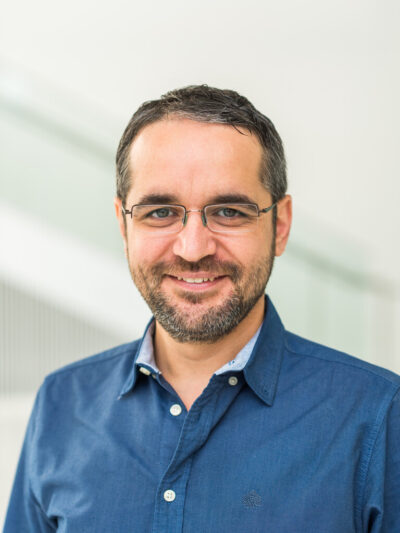So, what’s a MOF anyways?
This morning, chemists Susumu Kitagawa (Kyoto University), Richard Robson (University of Melbourne), and Omar Yaghi (University of California, Berkeley) received the 2025 Nobel Prize in Chemistry for the development of Metal Organic Frameworks, or MOFs. Their achievement lays the basis for applications related to harvesting water from desert air, capturing carbon dioxide, storing toxic gases, and even catalyzing chemical reactions.
Mircea Dincǎ, the Alexander Stewart 1886 Professor of Chemistry, investigates MOFs here at Princeton Chemistry as part of his lab’s mission to address matters related to the storage and consumption of energy.
Here is a quick Q&A with Mircea about MOFs.
Q: What was your reaction to this morning’s Nobel announcement about Metal Organic Frameworks?
A: It has been very exciting to work in this field, and now it’s even more fulfilling to be contributing and inventing in an area that has the popular recognition that the Nobel brings. I, along with many others, have been hoping that a Nobel for MOFs was in the works, so seeing it this year doesn’t come as a huge surprise. I’m so happy to see these gentlemen, giants of the field, recognized in this manner.

Mircea Dincǎ, Princeton Chemistry's Alexander Stewart 1886 Professor of Chemistry
Q: What are MOFs?
A: In layman’s terms, one can think of a MOF as a sponge, but with pores so tiny that they compartmentalize space to such an extent as to create giant internal surface areas. They are thus much more porous than any other material we know of, with internal surface areas so large that 1g of material can cover an entire football field (or >50,000 sq ft per gram). From a chemistry perspective, the real, fundamental advance worthy of a Nobel, I think, came from the discovery of bonds that are sufficiently strong as to support essentially a huge empty space.
Q: Why are they important?
A: Most materials that have such large empty spaces within their structure will collapse, so what makes MOFs exciting and surprising at the same time is that they maintain this porosity permanently, or at least under workable conditions. This has led to their use in myriad applications in gas storage and capture (e.g. CO2 capture, toxic gas storage), to fresh water harvesting and air conditioning.
Q: What are some other applications?
A: MOFs are also exciting because from a composition perspective, there are millions of possible combinations of metal ions and organic building blocks that can make up a MOF. This huge compositional variety can be used to impart additional properties besides porosity, sometimes in combinations that would seem mutually exclusive.
My own lab, for instance, has developed MOFs that are electrically conductive. It is counterintuitive to think of a material that is both highly porous and electrically conductive because electrical current doesn’t like to travel through space that is mostly empty. But once you manage to combine porosity with electrical conductivity, you can open up a whole set of new applications, from energy storage to chemiresistive sensing, to smart windows, and others. Lots of people are taking advantage of the vast compositional space available to MOFs to target additional applications in heterogeneous catalysis, including ourselves. They are even being used in medicine (e.g. drug or vaccine carriers), and as platforms for studying fundamental physics.
We offer our congratulations to the newest Nobel laureates, Messrs. Kitagawa, Robson, and Yaghi.
